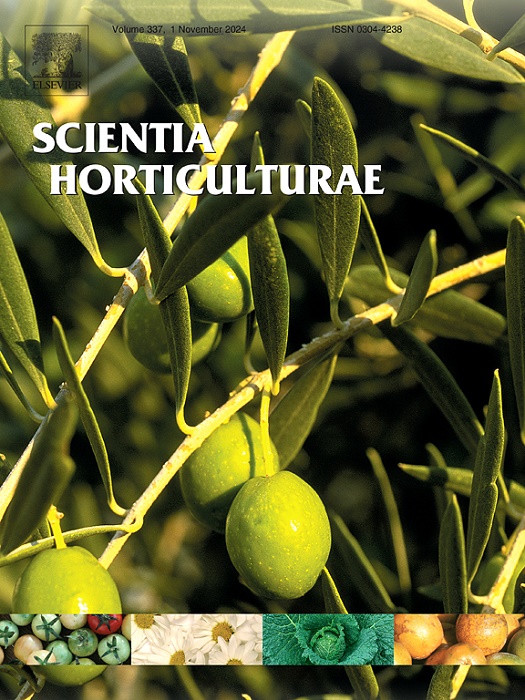Chemical composition of edible flowers: Worldwide research and case study from the Czech Republic
IF 3.9
2区 农林科学
Q1 HORTICULTURE
引用次数: 0
Abstract
Edible flowers are nutritionally, culinary and aesthetically valuable addition to food and beverages. Chemical composition of edible flowers (phenols, flavonoids, antioxidant activity etc.) has been analyzed in many studies from various parts of the world. Number of papers focused on content analysis of edible flowers markedly increased from year 2019. Species Calendula officinalis and species of genera Rosa, Dianthus, and Allium are most often studied species of edible flowers worldwide. From the comparison of content analysis from Czech Republic and other parts of the world is not possible clearly assess that climate conditions affect content in expected way. Warmer climate conditions do not always lead to higher phenolic content or antioxidant activity compared to plants from mild climate conditions. This review includes the results from extend study of edible flowers from Czech Republic. Mentioned case study include analysis of total phenolic and flavonoid content, antioxidant activity (DPPH), l-ascorbic acid, nitrates and saponins content of 41 species of edible flowers including both, wild and cultivated species. High values of phenolic content in Origanum sp. were confirmed by Czech and Portugal study. Very high content of l-ascorbic acid in species Primula veris (3838±952 mg/kg FW), Viola odorata (1227±212 mg/kg FW), Armoracia rusticana (1739 ± 245 mg/kg FW), Iris domestica (2068 ± 483 mg/kg FW) and Tropaeolum majus was comparable to results of study from Croatia. However, chemical composition of edible flowers is a very complex and variable issue affected by many factors such climate soil condition, or plant health condition.

食用花的化学成分:来自捷克共和国的全球研究和案例研究
可食用的花是营养,烹饪和美学价值的食品和饮料的补充。世界各地对食用花的化学成分(酚类、类黄酮、抗氧化活性等)进行了研究。与2019年相比,关注食用花卉含量分析的论文数量显著增加。金盏菊(Calendula officinalis)和玫瑰属、石竹属、葱属是世界上研究最多的食用花卉。从捷克共和国和世界其他地区的内容分析比较不可能清楚地评估气候条件以预期的方式影响内容。与温和气候条件下的植物相比,温暖的气候条件并不总是导致更高的酚含量或抗氧化活性。本文综述了捷克食用花卉的扩展研究结果。上述案例研究包括分析41种食用花卉(包括野生和栽培花卉)的总酚和类黄酮含量、抗氧化活性(DPPH)、l-抗坏血酸、硝酸盐和皂苷含量。捷克和葡萄牙的研究证实了牛头草中酚类物质的高含量。报春花(3838±952 mg/kg FW)、堇菜(1227±212 mg/kg FW)、农家槐(1739±245 mg/kg FW)、家鸢尾(2068±483 mg/kg FW)和大对角草(Tropaeolum majus)的l-抗坏血酸含量极高,与克罗地亚的研究结果相当。然而,食用花卉的化学成分是一个非常复杂多变的问题,受气候、土壤条件或植物健康状况等诸多因素的影响。
本文章由计算机程序翻译,如有差异,请以英文原文为准。
求助全文
约1分钟内获得全文
求助全文
来源期刊

Scientia Horticulturae
农林科学-园艺
CiteScore
8.60
自引率
4.70%
发文量
796
审稿时长
47 days
期刊介绍:
Scientia Horticulturae is an international journal publishing research related to horticultural crops. Articles in the journal deal with open or protected production of vegetables, fruits, edible fungi and ornamentals under temperate, subtropical and tropical conditions. Papers in related areas (biochemistry, micropropagation, soil science, plant breeding, plant physiology, phytopathology, etc.) are considered, if they contain information of direct significance to horticulture. Papers on the technical aspects of horticulture (engineering, crop processing, storage, transport etc.) are accepted for publication only if they relate directly to the living product. In the case of plantation crops, those yielding a product that may be used fresh (e.g. tropical vegetables, citrus, bananas, and other fruits) will be considered, while those papers describing the processing of the product (e.g. rubber, tobacco, and quinine) will not. The scope of the journal includes all horticultural crops but does not include speciality crops such as, medicinal crops or forestry crops, such as bamboo. Basic molecular studies without any direct application in horticulture will not be considered for this journal.
 求助内容:
求助内容: 应助结果提醒方式:
应助结果提醒方式:


